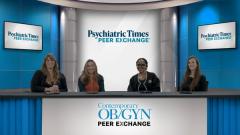
Managing Postpartum Depression in Clinical Practice
Experts discuss that after a positive screen for perinatal mood or anxiety disorders, timely and compassionate intervention—through trusted resources like Postpartum Support International, thoughtful medication and therapy options, and patient-centered education that addresses stigma and supports shared decision-making—is key to achieving meaningful recovery and improved parent-infant outcomes.
Episodes in this series

Once a positive screen for perinatal mood or anxiety disorder is identified, the next step is providing timely, compassionate intervention. A great first move is connecting patients with established resources like Postpartum Support International (PSI). PSI offers local therapist directories, virtual support groups tailored to specific populations (eg, NICU parents, LGBTQ+ individuals, loss survivors), and a warmline that can help bridge patients to services. Many states also offer psychiatric consultation lines that allow primary care or obstetrics providers to quickly access expert guidance on treatment plans, especially when specialty care may be delayed.
For providers comfortable initiating treatment, combining pharmacologic and nonpharmacologic interventions is often most effective. Selective serotonin reuptake inhibitors, like sertraline, are commonly used and well-tolerated, but the choice of medication should reflect the patient’s past experiences and individual profile. Encouraging patients with a hopeful, evidence-based message is critical—perinatal depression responds well to treatment, and many individuals can achieve full remission. Nonmedication options like therapy, lifestyle interventions, and support groups also play a vital role, and dyadic therapy can be especially beneficial in supporting parent-infant bonding.
Patient hesitancy around medication is common, often driven by misinformation, stigma, or past negative experiences. A thoughtful conversation that explores their beliefs, addresses misconceptions, and normalizes treatment can help build trust. Emphasizing the temporary nature of medication, its purpose as a tool for healing, and the option to taper once stable can ease anxiety. Involving partners or family in the education process—when appropriate—can also reduce external resistance. Ultimately, patient-centered care that respects readiness, offers layered options, and provides consistent follow-up ensures the best chance for meaningful recovery.
Newsletter
Receive trusted psychiatric news, expert analysis, and clinical insights — subscribe today to support your practice and your patients.


